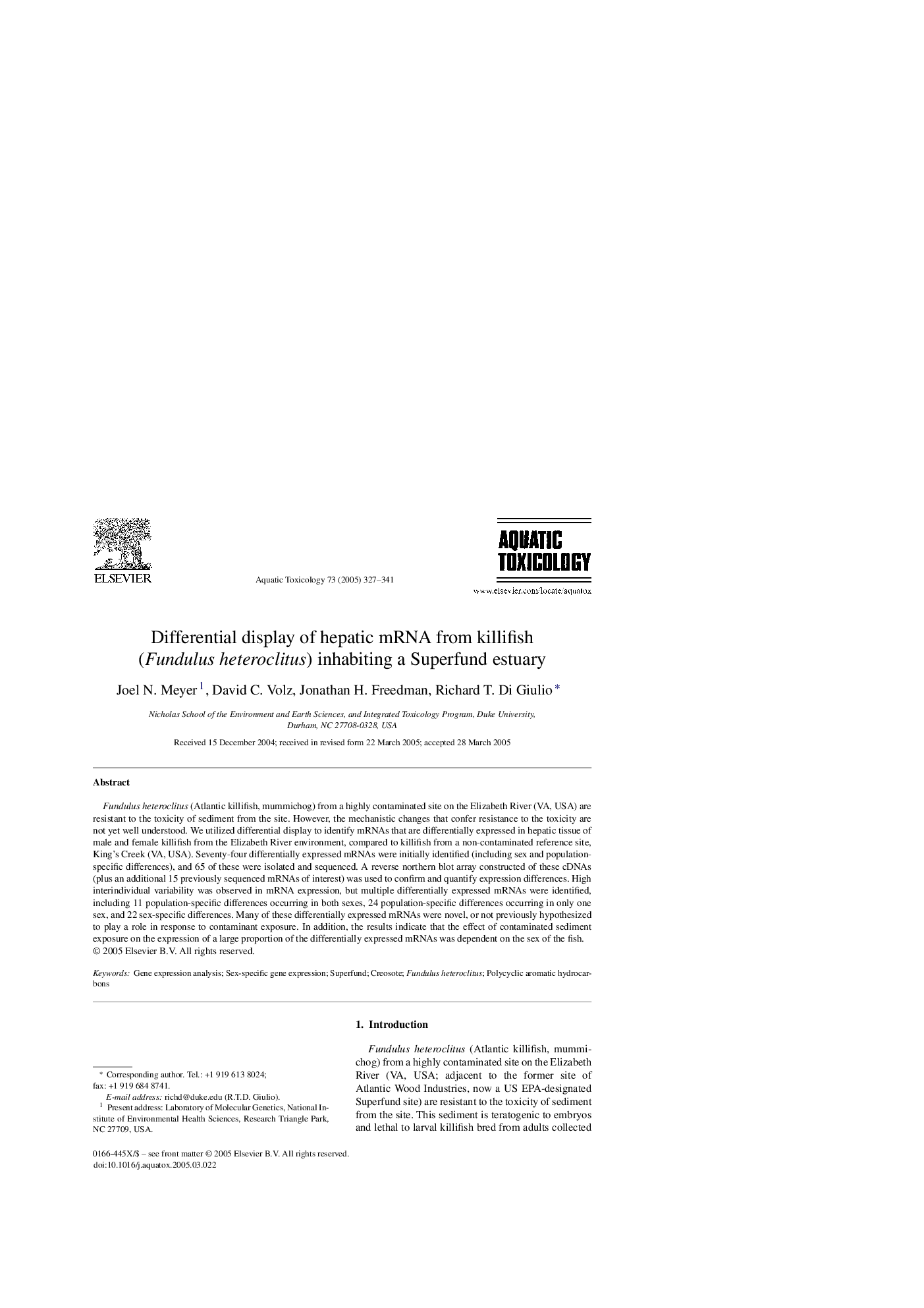| Article ID | Journal | Published Year | Pages | File Type |
|---|---|---|---|---|
| 9478245 | Aquatic Toxicology | 2005 | 15 Pages |
Abstract
Fundulus heteroclitus (Atlantic killifish, mummichog) from a highly contaminated site on the Elizabeth River (VA, USA) are resistant to the toxicity of sediment from the site. However, the mechanistic changes that confer resistance to the toxicity are not yet well understood. We utilized differential display to identify mRNAs that are differentially expressed in hepatic tissue of male and female killifish from the Elizabeth River environment, compared to killifish from a non-contaminated reference site, King's Creek (VA, USA). Seventy-four differentially expressed mRNAs were initially identified (including sex and population-specific differences), and 65 of these were isolated and sequenced. A reverse northern blot array constructed of these cDNAs (plus an additional 15 previously sequenced mRNAs of interest) was used to confirm and quantify expression differences. High interindividual variability was observed in mRNA expression, but multiple differentially expressed mRNAs were identified, including 11 population-specific differences occurring in both sexes, 24 population-specific differences occurring in only one sex, and 22 sex-specific differences. Many of these differentially expressed mRNAs were novel, or not previously hypothesized to play a role in response to contaminant exposure. In addition, the results indicate that the effect of contaminated sediment exposure on the expression of a large proportion of the differentially expressed mRNAs was dependent on the sex of the fish.
Keywords
Related Topics
Life Sciences
Agricultural and Biological Sciences
Aquatic Science
Authors
Joel N. Meyer, David C. Volz, Jonathan H. Freedman, Richard T. Di Giulio,
